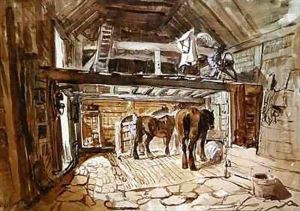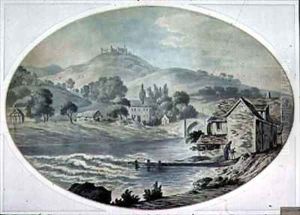William Burgess Paintings
William Burges was a prominent British architect and designer, widely recognized for his significant contributions to the Gothic Revival movement in the 19th century. Born on December 2, 1827, in London, England, Burges grew up in a well-off family, which allowed him to pursue his interests in art and architecture from a young age. He was educated at King's College London and later at Trinity College, Cambridge, though he left without obtaining a degree. Burges then apprenticed under the architect Edward Blore, known for his work on Buckingham Palace, and subsequently with Sir Matthew Digby Wyatt, the Surveyor of the East India Company.
Throughout his career, Burges distinguished himself as a singular talent in architectural design, stained glass, jewellery, and furniture, deeply influenced by medieval Gothic architecture. His approach was characterized by a meticulous attention to detail, vibrant use of color, and incorporation of symbolic and fantastical elements, setting his work apart from his contemporaries. Some of his most notable projects include the design of Cardiff Castle and Castell Coch for the 3rd Marquess of Bute, one of the wealthiest men of the time. These projects allowed Burges to fully express his architectural vision, combining robust medievalism with whimsical, imaginative designs.
Burges's work was not limited to private commissions; he also participated in numerous competitions and was involved in the design of churches and other public buildings. Despite his talent, his preference for lavishly ornate and expensive designs often meant that his projects exceeded budgets, which limited his opportunities for larger public commissions. Nevertheless, his influence on the Gothic Revival movement and Victorian architecture is undeniable.
William Burges never married and lived much of his life dedicated solely to his work. He passed away on April 20, 1881, leaving behind a legacy of architectural and artistic works that continue to be celebrated for their creativity and craftsmanship. Burges's designs remain a testament to the imaginative possibilities of Gothic Revival architecture, blending historical inspiration with fantastical innovation. His work has been preserved and studied as an integral part of Britain's cultural and architectural heritage.

